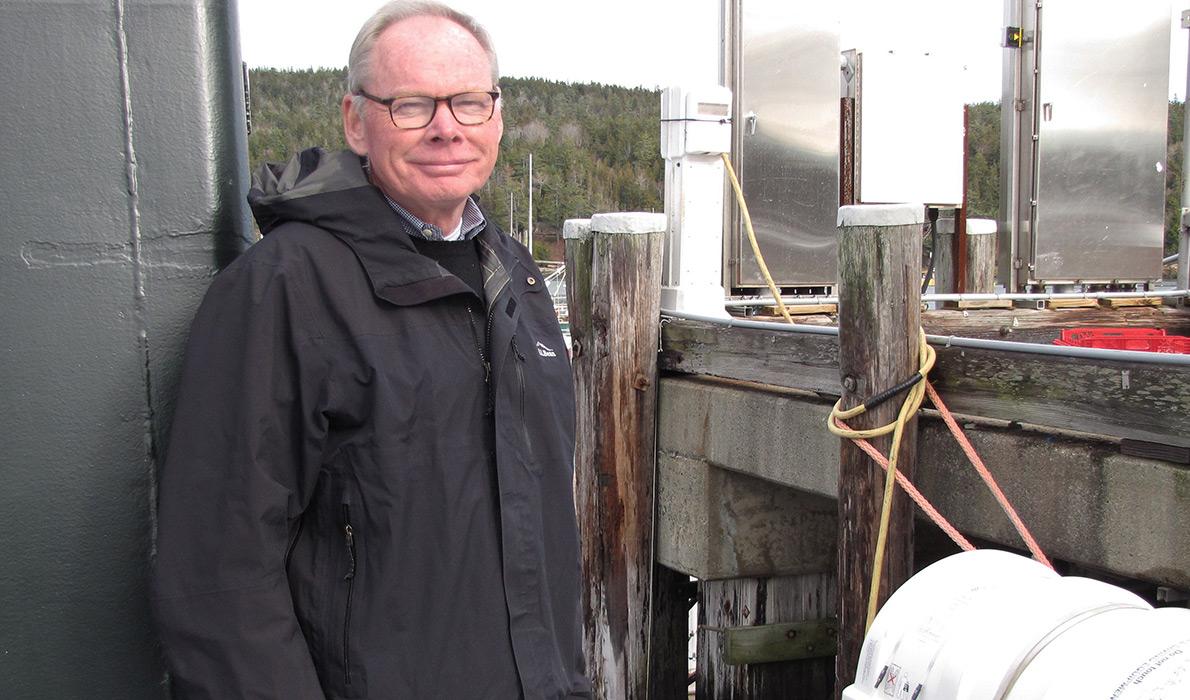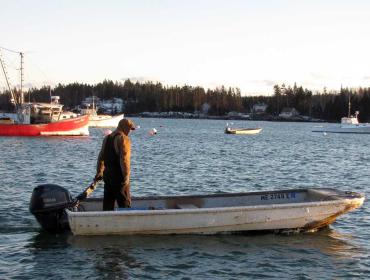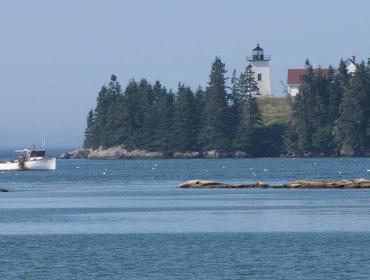Posted January 21, 2016
Last modified January 21, 2016
Think of it as a floating community center.
Hot coffee and a hearty breakfast are still served aboard Sunbeam V, the Maine Seacoast Mission's 75-foot long vessel which provides hospitality and fellowship to those living on Maine's Midcoast and Downeast islands. That part of the mission's story has been told many times.
But what many may not know is that the 110-year-old nonprofit has kept pace with technological changes, bridging gaps in healthcare in ways that would have had the Mission's founders reeling in disbelief.
Yet another part of the Mission's story—again, perhaps not well-known—is that it runs a vigorous educational outreach program in coastal Washington County.
After 35 years as a pastor of three rural churches near Farmington, Scott Planting, 65, took over as director of the Maine Seacoast Mission five years ago. In a conversation aboard the Sunbeam V, docked in Northeast Harbor, Planting reminisces about his days working in rural, Western Maine. Much of his outreach work there was aimed at men who worked as independent loggers.
"Fishermen are not all that different from the loggers I knew," he observes.
But the resources the Bar Harbor-based Seacoast Mission offers islanders and residents of coastal Washington County are far greater. The Mission's annual budget is $3.6 million, which relies on an endowment, fundraising and grants. It employs a full-time staff of 30 and works with 70 part-timers, most of whom are teachers in its EdGe program, the Washington County educational outreach.
HOSPITALITY
"Hospitality is sort of the center of what we do here on the boat," Planting explained. When the Sunbeam is on an island visit, fishermen will come aboard early in the morning for coffee and a breakfast sandwich before heading out. Tradesmen, just arriving on-island for work, also will stop by for sustenance and talk.
"They'll just kind of plunk themselves down," he says, and chat with each other and Mission staff. "Our engineer is a very good mechanic," he adds, who sometimes will help repair a fisherman's equipment. Children will drop by after school is out for the day. The vessel's salon can seat 40.
In late December, Planting recounts a recent three-day tour of Frenchboro, Isle au Haut and Matinicus islands. Along with the captain, engineer and steward, nurse Sharon Daley and Doug Cornman, director of island outreach, made the trip.
On Isle au Haut, "just about the entire community" visited the boat, Planting said. And if islanders don't make it to the boat, Daley and Cornman have been known to knock on doors to check up on folks. And of course, there are phone calls and Facebook contact, too.
If they come aboard the Sunbeam, islanders will visit privately with the nurse in a well-equipped suite. In addition to all the screening the nurse can do, the facility allows a mainland physician to examine a patient using high-definition cameras over a high-speed Internet link. The HD camera "is really good for wounds, contusions and sticking down your throat," Planting explains, holding the device. "Lots of sore throats get diagnosed," he said, and physicians will look at, for example, a bad cut a fisherman might have sustained and either send an antibiotic out to the island or recommend the patient come to the mainland for treatment.
The facility also has a stethoscope and otoscope (for examining ears) which the nurse holds and the mainland doctor can hear and see, in high-definition.
Another part of the healthcare offerings is counseling. Islanders can discreetly walk into the medical suite and talk about mental health, substance abuse and other matters with a mainland professional through a video-link. High standards of confidentiality are maintained throughout, Planting said.
In fact, earning and maintaining the trust of those the Mission serves is central in all its work, he said.
"We've been doing this for 110 years. All we have with the Seacoast Mission is trust," Planting said.
Washington County has been part of the Mission's domain since its founding, and 13 years ago, staff developed EdGe (named for local educator Ed Greaves), which serves about 750 children in nine public schools with after-school programs.
The two-hour long activities include a snack, games, homework help sessions and electives, such as learning to play chess or doing art projects. The Mission even drives the children to their homes after the day ends.
"Parents like it," Planting said, because it's a positive alternative to children being "latch key" kids. Residential summer programs also are offered.
In addition, "We're trying to engage parents with their children's education," and the Mission pays for adults to attend University of Maine at Machias training programs.
The Mission also runs food pantry and fuel assistance programs in the Downeast region.
There is a spiritual component to the Mission's work, but it is more implicit in the community service nature of the outreach. The Mission had paid parts of the salaries of island church pastors, but a change to its strategic plan now has it funding, through grants, the work those pastors undertake.

Contributed by




